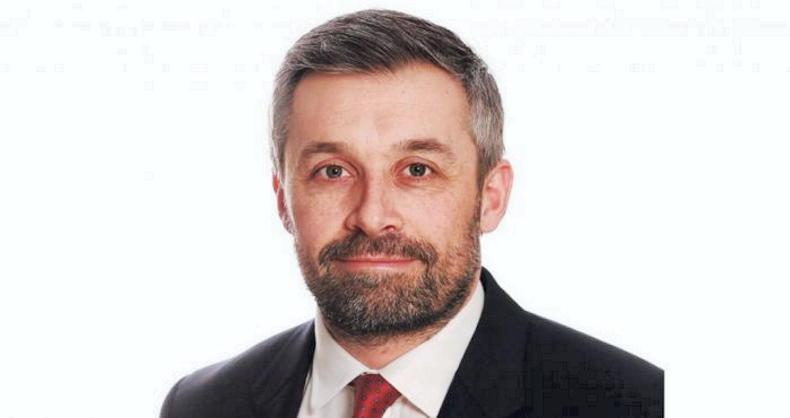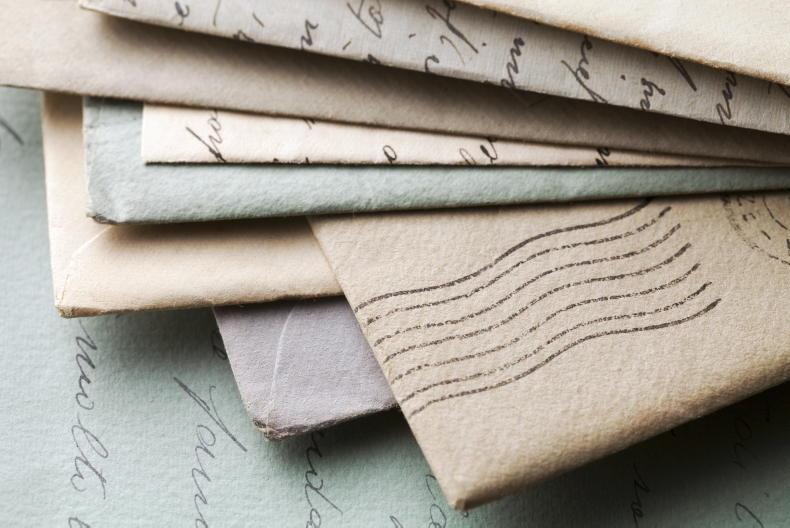The letter by Ion Codescu, DG Environment (DG ENV), European Commission to the Department of Agriculture, Food and the Marine (DAFM) has called into question Ireland’s Forestry Programme (2023-2027) and has received widespread comment in recent weeks.
While his comments are criticised as being “outdated” and bearing little relevance to current forestry practice, his questioning of Irish forestry legislation has raised eyebrows across the forestry and forest products sector.
In this regard, Codescu’s grasp of recent events – such as his call for abolishing fees for forestry licence application – is disturbing, as it calls into question not only the legislation that established the Forestry (Miscellaneous Provisions) Act 2020, but also the consultation process that influenced it.
Codescu states: “We have raised with you [DAFM] concerns that public participation fees introduced in 2020 might act as an obstacle to effective participation, especially where NGO concerns relate to the cumulative effects of a multiplicity of individual projects, each of which will require payment of a separate fee in order for opinions to be taken into account.”
He is referring to the act which provides a legal basis for the Forestry Appeals Committee (FAC) to introduce procedures that allow for the better management of the volume of appeals in the system. The regulations accompanying the act provides for “the charging of a fee of €20 per forestry licence application and per submission in relation to such applications.”
Codescu may be unaware of the background to this legislation. By 2020, the forestry licencing system was widely acknowledged as dysfunctional, with 80% of all licence appeals brought by two individuals in some months. Minister Hackett had no choice but to introduce a draft bill to address this issue, which was crippling the forestry sector.
Conscious of achieving consensus, she proposed a four-month period of open consultation on the draft bill and encouraged submissions from all stakeholders. It received a massive response, as nearly 9,000 submissions were received with 81% in favour of the bill. Codescu seems to be listening to the 19%.
The act increased the capacity of the FAC to determine appeals. It also provided clarity “as to the circumstances in which the minister might issue a general policy directive, i.e in prioritising certain classes of appeal, the minister shall have regard to the need to support economically and environmentally sustainable forest goods and services in the State.”
Codescu’s views are outdated in relation to planting on peats and hen harrier designated areas, which hasn’t occurred for 10 years, despite reasonable calls from the IFA and forestry companies for limited planting of native species in some of these areas.
“Specifically, in Special Protection Areas for hen harrier, afforestation has not been permitted since 2013,” said a DAFM spokesperson.
“Native woodland creation is being used to protect and enhance water quality,” he added.
“Furthermore, the new Irish Forestry Programme will plant more broadleaves and native trees nationally. There will be no monocultures, as every site will be required to have a minimum of 20% broadleaves in addition to 15% space for nature.”
There is no acknowledgement of this in Codescu’s letter. Meanwhile, his comments on planting peats has been widely criticised.
“Regarding his comments on the adverse impacts of uplands, peats and heaths, especially in Sitka spruce plantations, surely he must know that this is out of date,” said Dr Gerhardt Gallagher, forestry consultant.
“With the recent rate of planting, it is hard to see how any of these sites are being afforested,” he added.
Dr Gallagher’s view is shared by DAFM: “There is virtually no planting on unenclosed land and the new programme does not allow any planting at all in these areas,” said the spokesperson.
“This land is often located in the uplands on peat soils and is biodiversity sensitive. In addition, there is no planting on Annex 1 habitats whether designated or non-designated.”

Dr Gerhardt Gallagher – in trying to gain EU approval for the forestry programme, DAFM may be ruling out good forestry land.
Dr Gallagher said that in trying to gain EU approval for the programme, DAFM may be ruling out good forestry land without environmental constraints. “For example, bracken-dominated upland is considered non-productive by farmers and ecologists alike,” he said.
“Most of our marginal land, including shallow peats, is deforested by Neolithic farmers and colonisers and represents an impoverished ecology compared with diverse forestry.” He said that land is graded according to new site classifications as suitable for forestry on environmental and productive grounds, so the unenclosed-enclosed categorisation no longer applies, while close to 2m hectares of land is designated unfit for afforesation including peats..
“The comments by Mr. Codescu if implemented would rule out any chance of Ireland achieving its climate change target of 17% forest cover and carbon neutrality by 2050 as he virtually rules out all afforestation even on wet grassland,” he claimed.
“In this regard, he seems unaware of Ireland’s Climate Action Plan, which singles out afforestation as ‘one of the largest land-based, long-term climate change mitigation measures available to Ireland’.”
Roles of Commission climate, agriculture and enterprise DGs in Irish forestry
The current forestry programme stresses the importance of sustainable forest management, which comprises economic, environment and social objectives.
While Mr Codescu is only concerned with the environment pillar, forestry stakeholders don’t have the same luxury.
For them, the environment goes hand-in-hand with social and economic aspects, which raises two questions:
Why is DG ENV the only EU body that comments and influences Irish forest policy, when sustainable forestry directly involves other DGs, especially Agriculture (DG AGRI), Climate Action (DG CLIMA) and Internal Market, Industry, Entrepreneurship and SMEs (DG GROW)?Why haven’t stakeholders in the forestry and forest products sector made the case for sustainable forestry, including climate change directly to DG ENV and other DGs? DG CLIMA
The twin role of forestry is now acknowledged in Ireland’s Climate Action Plan in the forest and its products.
“Afforestation is the single largest land-based climate change mitigation measure available to Ireland” is stressed. “Using wood and wood-based products for construction is a sustainable substitute for conventional carbon-heavy construction products, such as concrete, brick and steel” is recommended in achieving net zero. DG ENV ignores both, but surely it is time to hear the views of DG CLIMA.
DG AGRI
The role of farm forestry is vital in achieving carbon neutrality by 2050, as agriculture is the greatest emitter of greenhouse gas (GHG) in Ireland.
While Irish forestry regrettably doesn’t feature in CAP, why isn’t the Department asking DG AGRI for comments on the role of converting to forestry to reduce GHGs?
DG GROW
The opportunities to increase timber usage in sustainable construction, especially timber frame (20% in Ireland, compared with 80% in Scotland) and mass timber (up to 80m high in Europe, zero in Ireland), depends on a sustainable supply of commercial timber. DG GROW (formerly Enterprise) has a role to play in supporting Ireland’s timber processors in creating a green sustainable construction industry.
Forestry stakeholders and DG ENV
Department officials occasionally question the lack of communication between the forest industry and DG ENV in particular. “This is not the industry’s fault, as we have repeatedly sought meetings with DG ENV, but their officials continue to turn down our requests,” said Mark McAuley, director of Forest Industries Ireland (FII).

Mark McAuley – repeated requests for meeting with DG Environment turned down
“We represent the total forestry and timber supply chain, from forest owners and forestry companies, to timber processors, wood product manufacturers and renewable energy producers,” he said. “Yet, we cannot put their viewpoints across, unlike a number of NGOs.”
He stressed that forestry is a sustainable enterprise and it should be pointed out to DGs that the Irish afforestation programme and various forestry supports are funded solely by the Irish taxpayer and that the vibrant timber processing sector is a “major wealth creator in rural Ireland.”
We tried to contact Ion Codescu by email and phone seeking a response, but at the time of writing we have not received a reply. The Irish Farmers Journal will feature a response to this article or related issues by Codescu should he wish to avail of the opportunity.
The letter by Ion Codescu, DG Environment (DG ENV), European Commission to the Department of Agriculture, Food and the Marine (DAFM) has called into question Ireland’s Forestry Programme (2023-2027) and has received widespread comment in recent weeks.
While his comments are criticised as being “outdated” and bearing little relevance to current forestry practice, his questioning of Irish forestry legislation has raised eyebrows across the forestry and forest products sector.
In this regard, Codescu’s grasp of recent events – such as his call for abolishing fees for forestry licence application – is disturbing, as it calls into question not only the legislation that established the Forestry (Miscellaneous Provisions) Act 2020, but also the consultation process that influenced it.
Codescu states: “We have raised with you [DAFM] concerns that public participation fees introduced in 2020 might act as an obstacle to effective participation, especially where NGO concerns relate to the cumulative effects of a multiplicity of individual projects, each of which will require payment of a separate fee in order for opinions to be taken into account.”
He is referring to the act which provides a legal basis for the Forestry Appeals Committee (FAC) to introduce procedures that allow for the better management of the volume of appeals in the system. The regulations accompanying the act provides for “the charging of a fee of €20 per forestry licence application and per submission in relation to such applications.”
Codescu may be unaware of the background to this legislation. By 2020, the forestry licencing system was widely acknowledged as dysfunctional, with 80% of all licence appeals brought by two individuals in some months. Minister Hackett had no choice but to introduce a draft bill to address this issue, which was crippling the forestry sector.
Conscious of achieving consensus, she proposed a four-month period of open consultation on the draft bill and encouraged submissions from all stakeholders. It received a massive response, as nearly 9,000 submissions were received with 81% in favour of the bill. Codescu seems to be listening to the 19%.
The act increased the capacity of the FAC to determine appeals. It also provided clarity “as to the circumstances in which the minister might issue a general policy directive, i.e in prioritising certain classes of appeal, the minister shall have regard to the need to support economically and environmentally sustainable forest goods and services in the State.”
Codescu’s views are outdated in relation to planting on peats and hen harrier designated areas, which hasn’t occurred for 10 years, despite reasonable calls from the IFA and forestry companies for limited planting of native species in some of these areas.
“Specifically, in Special Protection Areas for hen harrier, afforestation has not been permitted since 2013,” said a DAFM spokesperson.
“Native woodland creation is being used to protect and enhance water quality,” he added.
“Furthermore, the new Irish Forestry Programme will plant more broadleaves and native trees nationally. There will be no monocultures, as every site will be required to have a minimum of 20% broadleaves in addition to 15% space for nature.”
There is no acknowledgement of this in Codescu’s letter. Meanwhile, his comments on planting peats has been widely criticised.
“Regarding his comments on the adverse impacts of uplands, peats and heaths, especially in Sitka spruce plantations, surely he must know that this is out of date,” said Dr Gerhardt Gallagher, forestry consultant.
“With the recent rate of planting, it is hard to see how any of these sites are being afforested,” he added.
Dr Gallagher’s view is shared by DAFM: “There is virtually no planting on unenclosed land and the new programme does not allow any planting at all in these areas,” said the spokesperson.
“This land is often located in the uplands on peat soils and is biodiversity sensitive. In addition, there is no planting on Annex 1 habitats whether designated or non-designated.”

Dr Gerhardt Gallagher – in trying to gain EU approval for the forestry programme, DAFM may be ruling out good forestry land.
Dr Gallagher said that in trying to gain EU approval for the programme, DAFM may be ruling out good forestry land without environmental constraints. “For example, bracken-dominated upland is considered non-productive by farmers and ecologists alike,” he said.
“Most of our marginal land, including shallow peats, is deforested by Neolithic farmers and colonisers and represents an impoverished ecology compared with diverse forestry.” He said that land is graded according to new site classifications as suitable for forestry on environmental and productive grounds, so the unenclosed-enclosed categorisation no longer applies, while close to 2m hectares of land is designated unfit for afforesation including peats..
“The comments by Mr. Codescu if implemented would rule out any chance of Ireland achieving its climate change target of 17% forest cover and carbon neutrality by 2050 as he virtually rules out all afforestation even on wet grassland,” he claimed.
“In this regard, he seems unaware of Ireland’s Climate Action Plan, which singles out afforestation as ‘one of the largest land-based, long-term climate change mitigation measures available to Ireland’.”
Roles of Commission climate, agriculture and enterprise DGs in Irish forestry
The current forestry programme stresses the importance of sustainable forest management, which comprises economic, environment and social objectives.
While Mr Codescu is only concerned with the environment pillar, forestry stakeholders don’t have the same luxury.
For them, the environment goes hand-in-hand with social and economic aspects, which raises two questions:
Why is DG ENV the only EU body that comments and influences Irish forest policy, when sustainable forestry directly involves other DGs, especially Agriculture (DG AGRI), Climate Action (DG CLIMA) and Internal Market, Industry, Entrepreneurship and SMEs (DG GROW)?Why haven’t stakeholders in the forestry and forest products sector made the case for sustainable forestry, including climate change directly to DG ENV and other DGs? DG CLIMA
The twin role of forestry is now acknowledged in Ireland’s Climate Action Plan in the forest and its products.
“Afforestation is the single largest land-based climate change mitigation measure available to Ireland” is stressed. “Using wood and wood-based products for construction is a sustainable substitute for conventional carbon-heavy construction products, such as concrete, brick and steel” is recommended in achieving net zero. DG ENV ignores both, but surely it is time to hear the views of DG CLIMA.
DG AGRI
The role of farm forestry is vital in achieving carbon neutrality by 2050, as agriculture is the greatest emitter of greenhouse gas (GHG) in Ireland.
While Irish forestry regrettably doesn’t feature in CAP, why isn’t the Department asking DG AGRI for comments on the role of converting to forestry to reduce GHGs?
DG GROW
The opportunities to increase timber usage in sustainable construction, especially timber frame (20% in Ireland, compared with 80% in Scotland) and mass timber (up to 80m high in Europe, zero in Ireland), depends on a sustainable supply of commercial timber. DG GROW (formerly Enterprise) has a role to play in supporting Ireland’s timber processors in creating a green sustainable construction industry.
Forestry stakeholders and DG ENV
Department officials occasionally question the lack of communication between the forest industry and DG ENV in particular. “This is not the industry’s fault, as we have repeatedly sought meetings with DG ENV, but their officials continue to turn down our requests,” said Mark McAuley, director of Forest Industries Ireland (FII).

Mark McAuley – repeated requests for meeting with DG Environment turned down
“We represent the total forestry and timber supply chain, from forest owners and forestry companies, to timber processors, wood product manufacturers and renewable energy producers,” he said. “Yet, we cannot put their viewpoints across, unlike a number of NGOs.”
He stressed that forestry is a sustainable enterprise and it should be pointed out to DGs that the Irish afforestation programme and various forestry supports are funded solely by the Irish taxpayer and that the vibrant timber processing sector is a “major wealth creator in rural Ireland.”
We tried to contact Ion Codescu by email and phone seeking a response, but at the time of writing we have not received a reply. The Irish Farmers Journal will feature a response to this article or related issues by Codescu should he wish to avail of the opportunity. 










SHARING OPTIONS